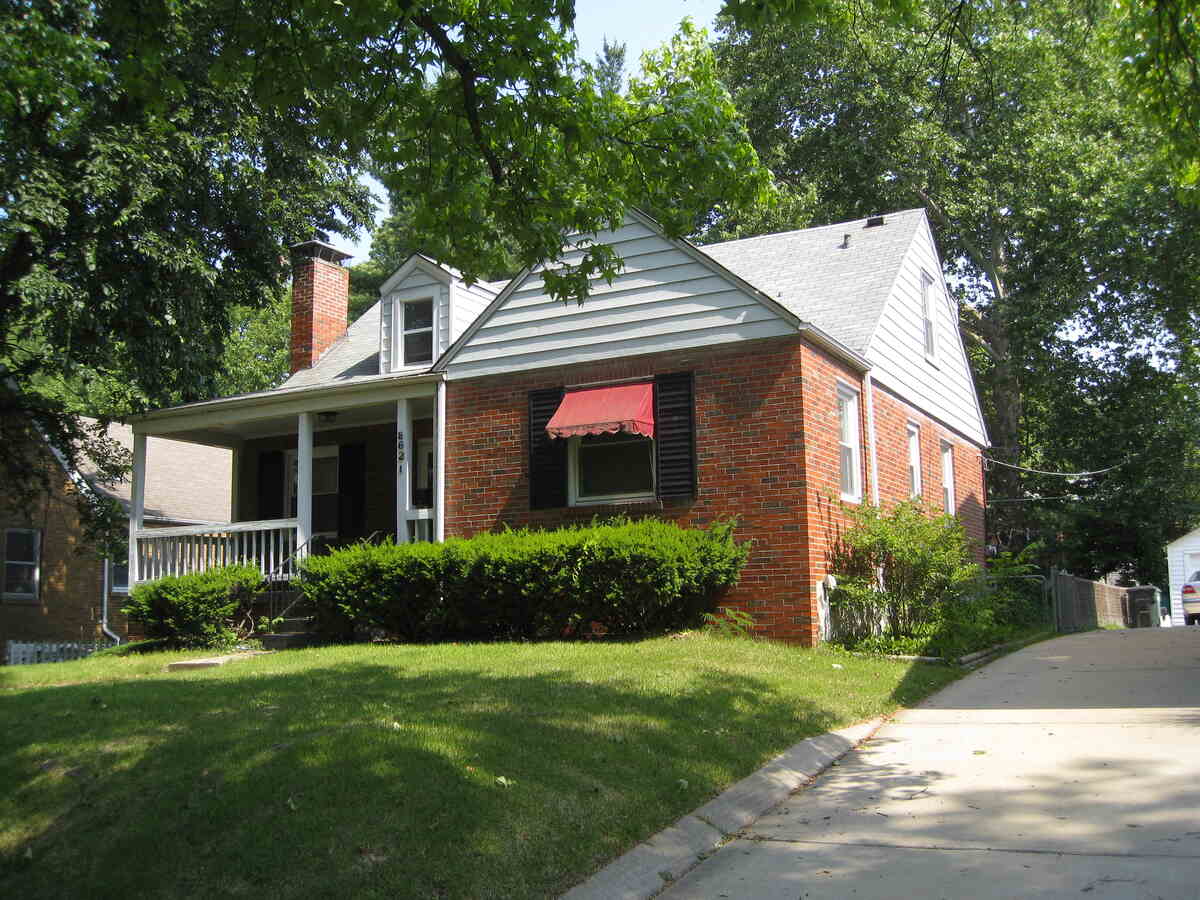
Missouri is home to many natural beauties, and it isn’t surprising that every homeowner in this state wants a beautiful lawn. Finding the best grass seed for Missouri is an essential part of enjoying a lush, green, and healthy yard.
In the spirit of Missouri’s “Show-Me” attitude, we’re here to show you how to elevate your yard from being just another patch of green to the envy of the neighborhood. From cool-season grasses, like tall fescue, to warm-season varieties, like Bermuda, we’ve got you covered. So, let’s dive in.
Growing Grass in the Transition Zone
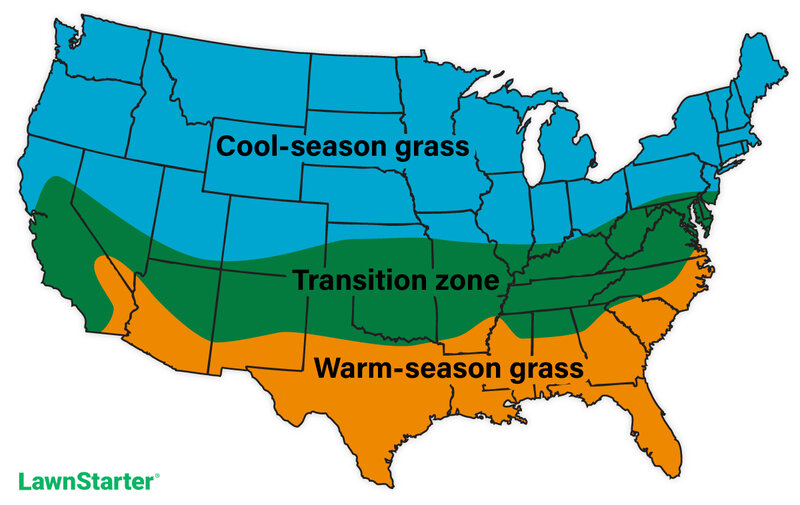
Living in Missouri means dealing with a bit of everything when it comes to weather. There are hot, humid summers and a range of mild to downright cold winters. This puts Missouri in what’s called the transition zone, which means your grass has to be able to handle both temperature extremes.
There are two types of grasses.
- Warm-season grasses thrive in the scorching sun and soaring temperatures. They grow best when the temperature is between 75 and 90 degrees Fahrenheit. They usually go dormant during winter.
- Cool-season grasses grow best in temperatures between 55 and 75 degrees Fahrenheit. They handle temperature fluctuations better than warm-season grasses, but summer temperatures can cause heat stress on them.
Okay, so what grass best suits Missouri’s climate? To sum up, cool-season grasses will be better suited for your lawn in northern Missouri. In contrast, warm-season grasses will handle the heat better in central or southern Missouri.
Now, let’s take a look at each grass type in detail.
Best Cool-Season Grasses for Missouri
Tall Fescue

Photo Credit: Aaron J. Patton, Ph.D. / Turfgrass Extension Specialist at Purdue University
Turf-type tall fescue is extremely popular in Missouri as it adapts well to the state’s climate. Thanks to its deep, 2- to 3-foot root system, it tolerates heat and drought. Tall fescue grows best in full sun and can tolerate partial shade.
This grass type has coarse-textured, medium- to dark-green grass blades. It doesn’t tolerate high-foot traffic but can handle normal lawn usage. Tall fescue can’t recover from damage by itself. However, it resists diseases pretty well.
- Classification: Cool-season grass
- Spreads by: Short rhizomes but has a bunch-type growth habit
- Shade tolerance: Moderate
- Drought tolerance: Moderate to high
- Foot traffic tolerance: Moderate
- Maintenance needs: Frequent mowing. Does not produce significant thatch.
- Mowing height: Set mowing height to 2 inches when grass reaches 3 inches tall.
- Potential for disease: Low
- Soil pH: 5.5-6.5
- Soil type: Adapted to a wide range of soil conditions, but prefers fertile clay soils with good drainage.
- Other notes: In Missouri, tall fescue should be fertilized in early to mid-April, with 0.5 to 1 pound of nitrogen per 1,000 square feet.
Grass Seed Options:
– Triple-Play Tall Fescue Grass Seed Blend (5000 sq ft)
– Eretz Kentucky 31 K31 Tall Fescue Grass Seed (choose your size)
– Pennington The Rebels Tall Fescue Grass Seed Mix (7 lb.)
Fine Fescue
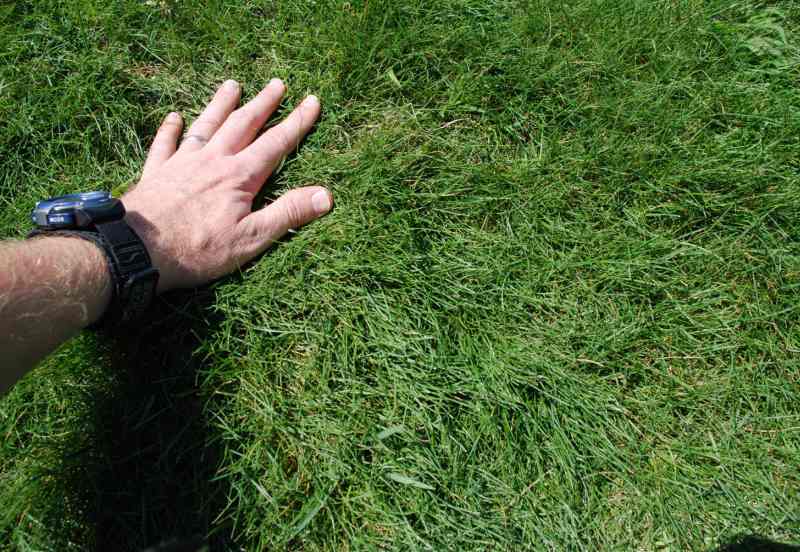
Photo Credit: Aaron J. Patton, Ph.D. / Turfgrass Extension Specialist at Purdue University
Fine fescue is a group that includes five types of grass: Chewings fescue, hard fescue, sheep fescue, slender creeping red fescue, and strong creeping red fescue. In Missouri, fine fescues are usually used in seed mixtures for lawns that receive a lot of shade.
These grasses look beautiful with fine-textured, medium-green leaves. They’re low-maintenance and can tolerate drought, but are prone to many diseases, especially brown patch. Additionally, if you plan to host many outdoor activities, don’t choose fine fescues, as they have a low foot traffic tolerance.
- Classification: Cool-season grass
- Spreads by: Creeping red fescue spreads by rhizomes, while other fine fescues are bunch-type grasses, such as Chewings, hard, and sheep fescues.
- Shade tolerance: Moderate to high, depending on the species
- Drought tolerance: Moderate to high, depending on the species
- Foot traffic tolerance: Low to moderate, depending on the species
- Maintenance needs: Low
- Mowing height: Set mowing height between 2.5 and 4 inches, depending on the species
- Potential for disease: Moderate. Prone to brown patch, red thread, leaf spot, dollar spot, summer patch, and powdery mildew.
- Soil pH: 6-6.5
- Soil type: Will not perform well in wet soil conditions. Prefers drier soils and tolerates a wide range of soil types and fertility.
- Other notes: If you intend to plant fine fescues as a monoculture for shady areas in Missouri, hard fescue, sheep fescue, and Chewing’s fescue are preferred.
Grass Seed Options:
– Outsidepride Legacy Fine Fescue Grass Seed (5 lbs.)
– Eretz Creeping Red Fine Fescue Seed (choose your size)
– Outsidepride Creeping Red Fine Fescue Grass Seed (25 lbs.)
– Outsidepride Hard Fine Fescue Grass Seed (10 lbs.)
Kentucky Bluegrass

Photo Credit: Shutterstock
Kentucky bluegrass has a classic appearance with narrow, fine-textured, dark green leaves. It takes between 14 and 28 days to germinate, which is higher than other grasses. But the grass spreads quickly once established, forming a dense turf.
Kentucky bluegrass is soft to walk on with bare feet and can handle moderate foot traffic. Thanks to its rhizomes, this grass can quickly recover from damage. Kentucky bluegrass can be a great option for northern Missouri if you maintain it properly.
- Classification: Cool-season grass
- Spreads by: Rhizomes
- Shade tolerance: Low
- Drought tolerance: Moderate
- Foot traffic tolerance: Moderate
- Maintenance needs: Moderate mowing frequency and requires high fertilization
- Mowing height: Set mowing height between 2.5 and 3.5 inches.
- Potential for disease: Moderate to high. Prone to several diseases, such as leaf spot, dollar spot, necrotic ring spot, summer patch, and stripe smut.
- Soil pH: 6-7.5
- Soil type: Performs best in well-drained, heavy soils with high fertility.
- Other notes: For shady areas, a seed mixture of 30-50% Kentucky bluegrass and 50-70% fine fescues is recommended.
Grass Seed Options:
– Jonathan Green (11970) Blue Panther Kentucky Bluegrass Grass Seed (3 lbs.)
– SeedRanch Midnight Kentucky Bluegrass Seed (5 lbs.)
– Jacklin Seed – Biltmore Blue Blend – 100% Kentucky Bluegrass (5 lbs.)
Perennial Ryegrass
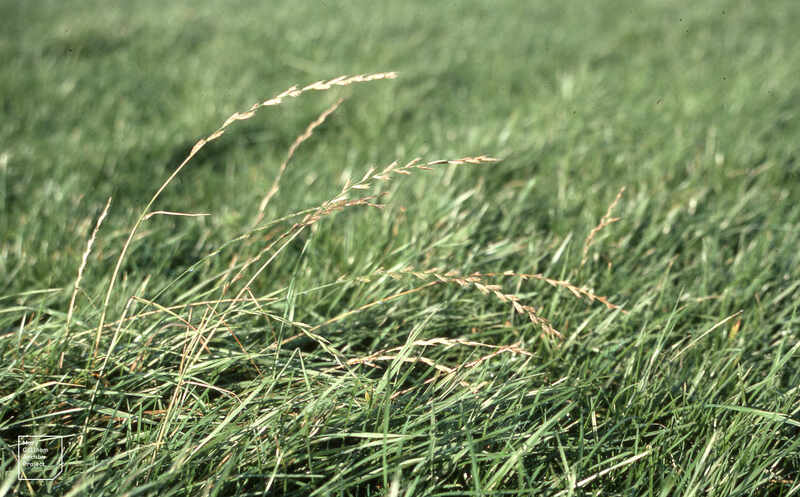
Photo Credit: Dr Mary Gillham Archive Project / Flickr / CC BY 2.0
Perennial ryegrass has the advantage of germinating in less than a week. It forms a solid turf within 60 days, making it one of the fastest-growing grasses. This grass grows best in full sun and requires regular watering.
Perennial ryegrass can tolerate high foot traffic. But, since it lacks rhizomes, it can’t recover from damage and will often die in harsh Missouri summers if not intensely cared for. It is also prone to red thread and gray leaf spot. With proper maintenance, you can prevent the disease or at least minimize the damage.
- Classification: Cool-season grass
- Spreads by: Has a bunch-type growth habit
- Shade tolerance: Low
- Drought tolerance: Low
- Foot traffic tolerance: High
- Maintenance needs: Moderate mowing and fertilization requirements. Thatch is not significant.
- Mowing height: Set mowing height to 1.5 to 2.5 inches
- Potential for disease: High. Common diseases include gray leaf spot, red thread, and leaf spot/melting-out.
- Soil pH: Can grow in soils with a pH between 5 and 8, but prefers between 6 and 7
- Soil type: Prefers good drainage and fertility, but can tolerate some poor drainage
- Other notes: Look for seed mixtures containing a maximum of 20% perennial ryegrass to avoid diseases.
Grass Seed Options:
– Outsidepride Perennial Ryegrass Seed (5 lbs.)
– Eretz ProTurf Perennial Ryegrass Fine Lawn Seed (choose your size)
Best Warm-Season Grasses for Missouri
Bermudagrass
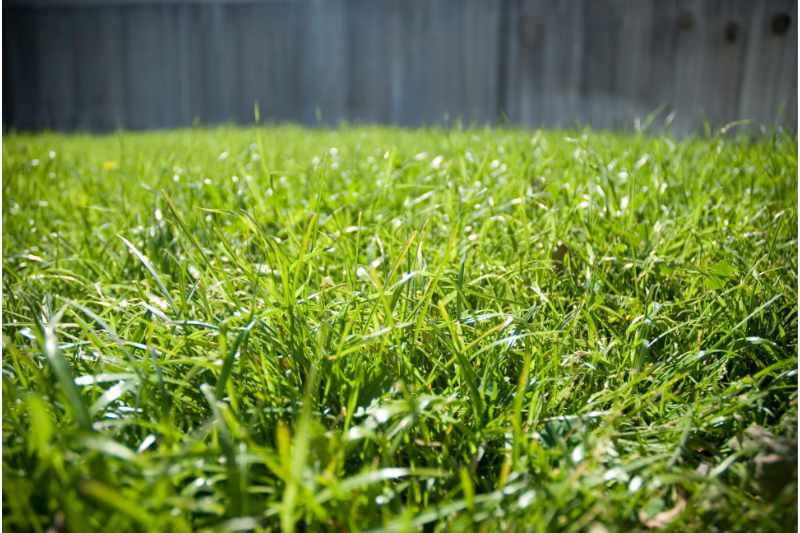
Bermudagrass looks gorgeous with its fine- to medium-textured, medium-green grass blades. It grows best in full sun and requires minimal watering. This grass requires frequent mowing and fertilization, but it has good resistance to diseases.
Bermudagrass can tolerate high foot traffic. In fact, thanks to its durability and ability to quickly recover from damage, you can even have a soccer match in your backyard! Bermudagrass turns brown during winter. But, if you fertilize during early fall, the grass can somewhat retain its thickness.
- Classification: Warm-season grass
- Spreads by: Rhizomes and stolons
- Shade tolerance: Low; thrives in full sun
- Drought tolerance: High
- Foot traffic tolerance: High
- Maintenance needs: Needs frequent mowing due to fast growth rate; develops thatch easily; needs regular fertilization
- Mowing height: Set the mowing height between 0.5 and 1.5 inches for hybrid Bermudagrass cultivars. Mow common Bermudagrass down to 1.5 to 2.5 inches.
- Potential for disease: Good resistance to diseases. Low resistance to insects.
- Soil pH: 6-6.5
- Soil type: Tolerates most soil types
- Other notes: Bermudagrass should preferably be seeded only in southern Missouri lawns.
Grass Seed Options:
– Pennington Bermudagrass Bare Spot (5 lb. bag)
– Pennington Smart Seed Bermudagrass Mix (8.75-lb. bag)
– Scotts Turf Builder Bermudagrass (10-lb. bag)
– Hancock Seed Co. Bermudagrass (50-lb. bag)
Zoysiagrass
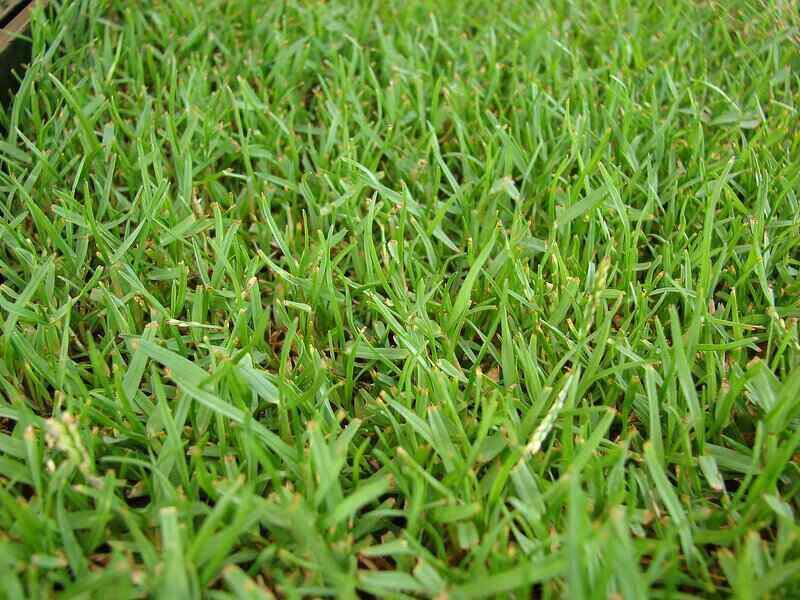
Photo Credit: Forest and Kim Starr / Wikimedia Commons / CC BY 3.0 US
Zoysiagrass is coarse-textured with attractive green grass blades. It’s durable and can tolerate high foot traffic. But it takes time to recover from damage. This grass becomes dormant during winter, but it will stay green longer than other warm-season grasses.
Zoysiagrass grows best in full sun and can tolerate partial shade. It grows slowly, taking about a year to spread and form a solid turf. Zoysiagrass requires low fertilization and can resist diseases and insects.
- Classification: Warm-season grass
- Spreads by: Rhizomes and stolons
- Shade tolerance: Moderate
- Drought tolerance: Moderate to high
- Foot traffic tolerance: High, but it takes time to recover from damage
- Maintenance needs: Low fertilizer requirements. It’s prone to thatch build-up.
- Mowing height: Set mowing height between 1 to 2 inches
- Potential for disease: Low
- Soil pH: 6-6.5
- Soil type: Well-draining, some cultivars are more tolerant of a wide range of soils than others.
- Other notes: The cultivar ‘Meyer’ is more winter-tolerant than Bermudagrass, hence the reason why it is often preferred over it. However, ‘Meyer’ is not available by seed.
Grass Plug and Seed Options:
– Zoysia Plugs (50 Large Grass Plugs)
– Zoysia Plugs (50 Full & Lush Grass Plugs)
– Zoysia Plugs (100 Plugs)
– Zoysia Emerald Grass Seeds (1/8 lb. of seeds)
– Zenith Zenith Grass Seeds (1/8 lb. of seeds)
How to Choose the Best Grass Type for Missouri
Picking the right grass for your lawn is not just about finding one that can handle the ups and downs of Missouri’s climate. You also have to think about your yard’s characteristics and how you see your outdoor space fitting into your life.
Here are a few factors to have in mind:
High-Maintenance vs. Low-Maintenance
One of the first things to consider is how much time and energy you’re willing to invest in your lawn. Some grass types require a steady routine of watering, fertilizing, dethatching, pest control, and regular mowing to stay healthy and look their best, while others can handle a more laid-back approach.
While you’re thinking about the maintenance level of your yard, it might be a good time to consider the best landscaping plants in Missouri to complement your lawn and not add unwanted workload.
- High-maintenance grasses: Bermudagrass and Kentucky bluegrass
- Moderate-maintenance grasses: Perennial ryegrass, tall fescue, and Zoysiagrass
- Low-maintenance grasses: Fine fescues
Wear Tolerance
You’ll also have to think about how your lawn will be used. Will it be a pristine showpiece, admired from afar, or will it be the heart of your home, with sports and barbecues? For those only looking for curb appeal, a grass type with lower wear tolerance might be fine.
- High wear tolerance: Bermudagrass, perennial ryegrass, and Zoysiagrass
- Moderate wear tolerance: Kentucky bluegrass and tall fescue
- Low wear tolerance: Fine fescues
Shade Tolerance
If your Missouri yard is graced with majestic trees casting wide shadows, you’re facing another important decision factor. Not all grasses can tolerate shade; some need full sun throughout the day to thrive.
If you’re curious about adding more shade to your yard, also check our guide on the best trees to plant in Missouri.
- High shade tolerance: Fine fescues
- Moderate shade tolerance: Tall fescue and Zoysiagrass
- Low shade tolerance: Bermudagrass, Kentucky bluegrass, and perennial ryegrass
Bring in the Professionals
In brief, choosing the perfect grass type for your Missouri lawn is just the beginning of your journey toward achieving that dream yard. The real challenge is what comes after: caring for and maintaining your lawn. If this sounds daunting, you’re not alone. You can call a Missouri lawn care professional to do it for you.
LawnStarter participates in the Amazon Services LLC Associates Program, an affiliate advertising program. LawnStarter earns revenue from products promoted in this article.
Main Image Credit: Chris Yunker / Flickr / CC BY 2.0